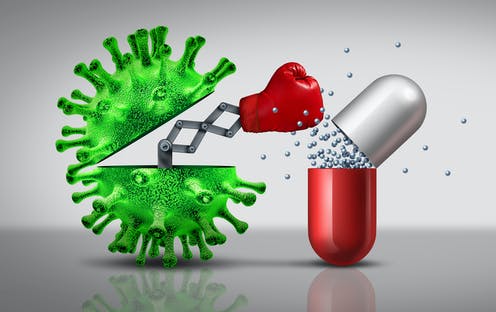“Toothless dogs can’t bite.”
I’m sure in one way or the other we’ve all been acquainted with the phrase, “The dog is all bark and no bite.” I don’t want dogs to bite people though. I just thought of this scourge of antimicrobial resistance in that line and felt the urge to simplify the concept for all the best way I can because we need it. In case you’ve never heard of antimicrobial resistance in your life, then this is your chance to learn and share the lesson with someone in your circle. Don’t break the chain.
I’ll presume you at one point have been or have seen someone with a wound that never heals. Regardless of being treated with different medicines, there are these wounds that never heal. Once the patient is referred to further tests, cultures may show that they are infected with an organism that is resistant to all the drugs that have been used. This then means that they’ll have to use alternative drugs which are active against the microbe, failure to which the patient risks having the foot cut or even dying from the wound. Such a terrible outcome. So how does this antimicrobial resistance come along? Today you got home from work with a flu and as always your go to treatment is that pack of antibiotics you were given last time when you had a chest problem. It then manifests in the form of the microorganisms causing the disease not being killed and building defenses against your drug of choice. The next time you fall ill, you fail to respond to it and by so doing your condition worse.
Other situations including using antibiotics in agricultural practices e.g. injecting animals i.e. cows, goats, sheep, camels etc. with antibiotics or even spraying your plants in the farm with antibiotics. This promotes the presence of antimicrobials in the environment. As always when we are under attack, we build defenses to guard us against future attacks. This is what microbes do to the antibiotics that you have been exposed to over time. At a later stage, the conditions that used to be treated with ease cannot be treated anymore using the same medicines if available. Some people don’t get lucky and die in the process and it’s not fair. We end up having toothless dogs for antibiotics as they give us a false assurance of being cured but in real sense the drug isn’t attacking the microbes it should kill or suppress their growth.
To protect ourselves from antimicrobial resistance (AMR), there is need to take responsibility as a people on what we should do and that’s the critical call over this World Antimicrobial Awareness Week (WAAW). How do you get involved?
- Don’t use antibiotics when you don’t need them. A common cold “homa” isn’t treated with an antibiotic. That’s irrational use of antimicrobials.
- Don’t overuse antibiotics on plants and animals in your agricultural practices. This increases the risk of antimicrobials developing resistance.
- Complete your dose of antimicrobials when prescribed and dispensed to you by your doctor. It’s important because it ensures you have adequate drug levels in the body to act against the infection.
- Don’t throw away any antimicrobials loosely into the environment in case they are not used. Return any unused and expired drugs to the pharmacy store for disposal.
Play your part in controlling and preventing antimicrobial resistance because you can.

